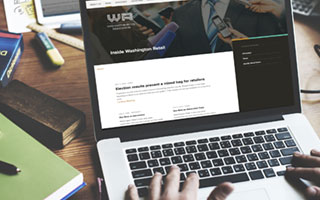How to prevent strains, sprains
Overexertion injuries generally fall into two categories – sprains (stretching or tearing ligaments) and strains (stretching or tearing tendons or muscles). These types of injuries have been associated with lifting, repeated bending at the waist with twisting, and long-term bending at the waist, pushing/pulling, carrying, reaching and long-term poor posture (either sitting or standing).
Labor & Industries has helped us with some specific data for Washington retailers, which looks like this:
- One out of every four injuries in retail is overexertion.
- The average cost per overexertion claim is a little over $11,500.
- Overexertion claims represent about 37% of workers’ comp costs in retail.
- Lifting is the most frequently mentioned cause of overexertion, resulting in at least half of all injuries. Carrying was second, followed closely by pushing and pulling.
- ‘Boxes’ were the most frequent source of injury. Of the more specific items listed, ‘automotive parts’ was the most common.
- The back was clearly the most frequently injured part of the body. Shoulder injuries were a distant second.
To prevent overexertion:
- Stretch and/or warm up before heavy lifting or strenuous activity
- Use hand trucks and carts as much as possible
- Lift with your legs bent and objects held close to your body
- Avoid bending, overreaching and twisting when lifting
- For those unusually sized items, get help when lifting
Proper posture, body mechanics and ergonomics can lessen overexertion injuries. Because it is important that the demands of the job match the capabilities of the worker, extra training may be required to perform a job safely.
Members can find additional information in the Safety Library in the Overexertion section. RS SafetyTV has some videos on this topic. SAFEME has a lesson module on proper lifting.
WR employs Rick Means as a Safety Specialist who is available to members to help draw up safety plans and suggest topics for safety meetings. Contact him at 360-943-9198, Ext. 18 or [email protected]





